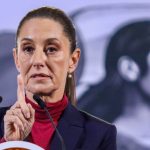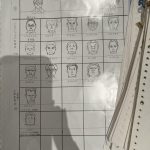The properly ecclesiastical dimension is becoming more and more secondary in the glorification of the “Russian World”, which means “people” and “empire” more than liturgies and episcopal mitres. Everywhere there are flags, T-shirts and digital memes printed with the motto “We are Russians, God is with us!”, which Tsar Nicholas I raised as Russia’s battle cry in the Crimean War in the mid-19th century.
A week has already passed since the seventh anniversary of the historic meeting between Pope Francis and Patriarch Kirill at the Havana airport on February 12, 2016, but neither of the two Churches has seen fit to remember it in any way. Until 2021 on those dates, conferences had been organized in alternate venues between Europe and Russia, the last of which was online, on the pandemic. Today the meetings are rare and improbable, with the silent presence of Metropolitan Antonij of Volokolamsk in some common appointment, without trying to resume a true dialogue, not even on the possibility of acting together for peace.
Precisely with a view to starting negotiations for the definitive cessation of the war in Ukraine, the Pope himself has already set aside any possible convergence with the patriarch, focusing resolutely on the political leaders. When he returned from his trip to Africa on February 5, Francis reiterated that he was “open” to meet with the presidents of the two countries in conflict, Zelenskyj and Putin. “If I have not gone to kyiv, it is because at the moment it is not possible to go to Moscow, but I ask for dialogue,” the pontiff wanted to clarify. Russian Leonid Sevastyanov said that the Pope had written to him that he “very much wants to come to Moscow and discuss with President Putin the possibility of normalizing the conflict between Russia and the West,” he told RIA Novosti on February 15.
Sevastyanov is the president of the Union of Old Believers, a schismatic formation of Russian Orthodoxy that has always professed the superiority of the faith and traditions of the Russians over all others, including those of other Orthodox churches. He is actually also a historical collaborator of Patriarch Kirill, who welcomed him as a seminarian when he was metropolitan in Smolensk, despite coming from a schismatic family, and even sent him to study at the Gregorian University in Rome, where he obtained a degree in philosophy. politics in 2002. He then completed his education at Georgetown University in Washington, with a doctorate in international relations. His trusting relationship with the Pope stems from the pope’s admiration for his wife Svetlana Kasyan, a popular opera singer who visited Francis in Rome several times with the entire family.
It is not, then, about friendly little letters: the correspondence with the Pope is a form of “parallel diplomacy” by an expert in international politics (Sevastyanov is also a consultant to the World Bank), a trusted man of the patriarch and the president himself. Putin, who has repeatedly expressed his closeness to the Old Believers community. The schismatics of the 17th century, persecuted by all for centuries, in a certain way today express the deep soul of Russian Christianity, at least in that radical and militant version that is increasingly imposed on the canonical and “ecumenical” version of the patriarchal Church. . With these messages it is confirmed that the Russians would also like to enlist the Pope of Rome in the great restoration of a traditionalist and intransigent Christianity -which in general terms is not very similar to the personality of Jorge Mario Bergoglio- and even in the fight against the political and cultural dominance of the American edged West, the real motivation for the aggressiveness of the Russians.
A variant of political and “popular” Christianity is increasingly imposed from Russia, the scope of which goes far beyond the war with Ukraine and the claims of reunification of the historical variants of the Russian people. The impact on international public opinion is such that the news of the rise of the new head of Al-Qaeda, the Egyptian Saif Al-Adel, trainer of the terrorists who attacked the Twin Towers in New York in 2001 and a symbol of the religious radicalism for twenty years, which today has been replaced by the “Russian martyrs” blessed by the patriarch for the Ukrainian war. In reality, the very figure of Patriarch Kirill and the other hierarchs of Russian Orthodoxy is increasingly fading in the face of the propaganda proclamations of political and military leaders.
The properly ecclesiastical dimension is becoming more and more secondary in the glorification of Orthodoxy of the “Russian World”, which means “people” and “empire” more than liturgies and episcopal mitres. It is a reissue of the “czarist triad”, which proclaimed “orthodoxy, autocracy and populism” as fundamental principles, leaving religiosity in last place, as a decorative accessory. Everywhere there are flags, but also T-shirts and digital memes, emblazoned with the slogan “We are Russians, God is with us!” (My russkye, c nami Bog!), according to which God is at the service of the Russians and not the other way around. It is the slogan that was imposed during the Swiss campaign of Generalissimo Suvorov in 1799, and that the tsar of the “triad”, Nicholas I, raised as the battle cry of Russia in the Crimean war in the mid-nineteenth century, the operation military who most inspired the current war. Even the Germanic Empire, which was born at the same time, also wanted to appropriate the motto “Gott mit uns!”, and in the First World War, Russians and Germans fought each other, both trusting in divine support, always assuming that we are talking about the same thing. God.
A Russian poet from the time of Nicholas I, Petr Vyazemsky, wrote a sarcastic poem at the time entitled “The Russian God”: “Do you need me to explain / Who is the Russian god? / He is the god of storms, the god of the abysses… the god of the hungry, the god of the frozen / the god of those who didn’t make it / that’s the Russian god”, and concludes with “the god of wandering strangers / who show up at our door / above all the god of the Germans / that is the Russian god.” “Germans” (nemtsy) designates all foreigners, those who are “mute” (nemye) because they do not have the word (slovo), the exclusive prerogative of the Slavs, in a complex pun intended to condemn the claim to be the only “true believers” in the universe.
In Putin’s new constitution of 2020, they wanted to officially introduce the name of God into the fundamental law, in the expression that speaks of the “memory of our parents, who transmitted to us their ideals and faith in God.” Also in this case reduced to an accessory and outside the direct influence of the patriarchy, which practically had no say in the drafting of the new text. As Meduza’s Signal column says, “it was not the Church that came to meet the Kremlin, but the Kremlin that entered the church.” All polls and statistics confirm that 70-80% of Russian citizens who declare themselves Orthodox understand their faith more than anything else as a symbolic dimension of state ideology. Of this almost entire ethnic Russian population, more than half have never set foot in a church, according to a 2022 Levada survey, only 27% believe in the resurrection and the afterlife, and more than 70% do not. has no intention of observing fasts, a fundamental precept of traditional Orthodox devotion. Patriarch Kirill himself has repeatedly confirmed that the Orthodox faith is first of all the “inheritance of the fathers”, and at best the “spiritual foundation of our civilization, of the Russian world.”
These affirmations are branded as heresy by both Orthodox, Catholic and Protestant theologians. But it is important to make it clear what heresy it is. In the 19th century, the Patriarchate of Constantinople condemned “philetism”, that is, the Church’s claim to national autonomy, attributed to the Greeks in Athens and to the Bulgarians. Subsequently, ethnic autocephaly became the norm for all of Orthodoxy, which today has 15 national Churches, and the same Patriarch Bartholomew of Constantinople forced the approval of the Autocephaly Volumes for Ukraine in 2018, unleashing the anger of Moscow. On the other hand, the Muscovite patriarchate was the first to pave the way for the national Churches, establishing itself as the Third Rome at the end of the 16th century.
And a few days ago the German Catholic bishops Peter Kohlgraf (director of Pax Christi) and Franz-Josef Overbeck (Bishop of Essen and military bishop) commented on the positions of Patriarch Kirill, describing them as “cynical and depraved” both from the religious point of view as moral, because they glorified the martyrdom of Russian soldiers, “sent to the front as cannon fodder.” The national imperialist heresy is thus aggravated by the justification of war and human sacrifice, going back to medieval thought.
Perhaps we should ask ourselves not only about the deviations from Russian Orthodoxy, but especially about the increasingly irrepressible spread of “political religion” in all latitudes. From radical Islam to neo-Ottoman Turkey, passing through American theo-cons and intransigent Pentecostalism, Hinduism and Buddhism at the service of politics, and the sacralization of Chinese communism. Is this the religion of the 21st century?
“RUSSIAN WORLD” IS THE ASIA NEWS BULLETIN DEDICATED TO RUSSIA. DO YOU WANT TO RECEIVE IT EVERY SATURDAY IN YOUR MAIL? SUBSCRIBE TO THE NEWSLETTER AT THIS LINK







![[Img #74683]](https://thelatestnews.world/wp-content/uploads/2024/12/The-main-mistakes-to-avoid-when-betting-on-electronic-sports-150x150.jpg)




